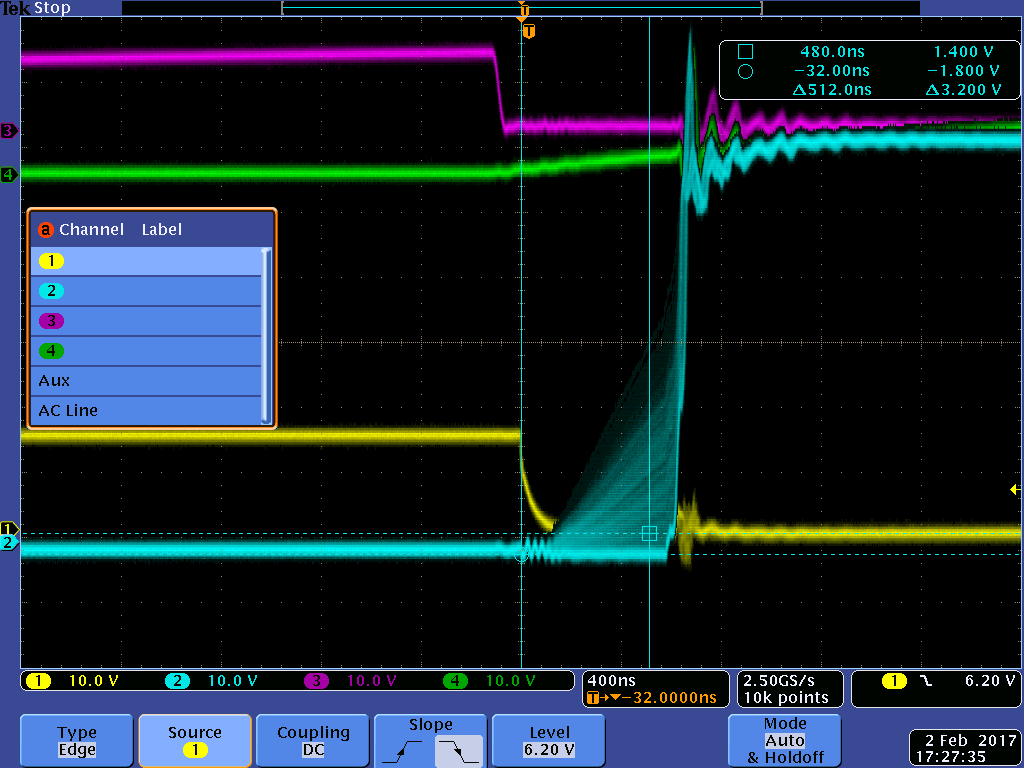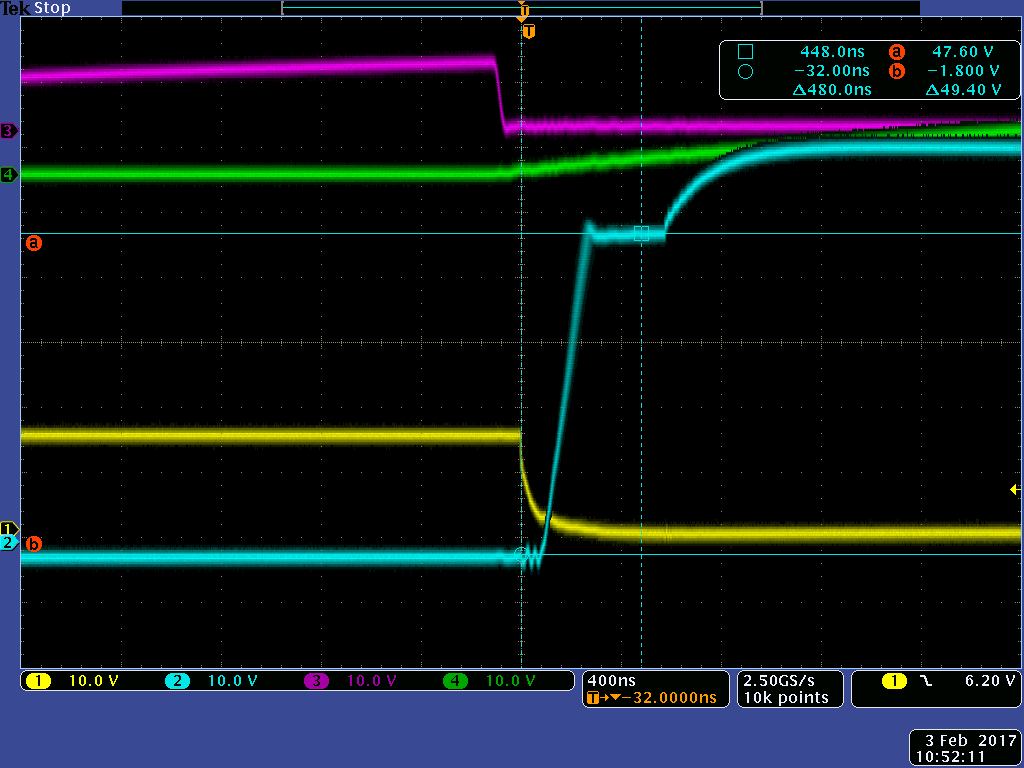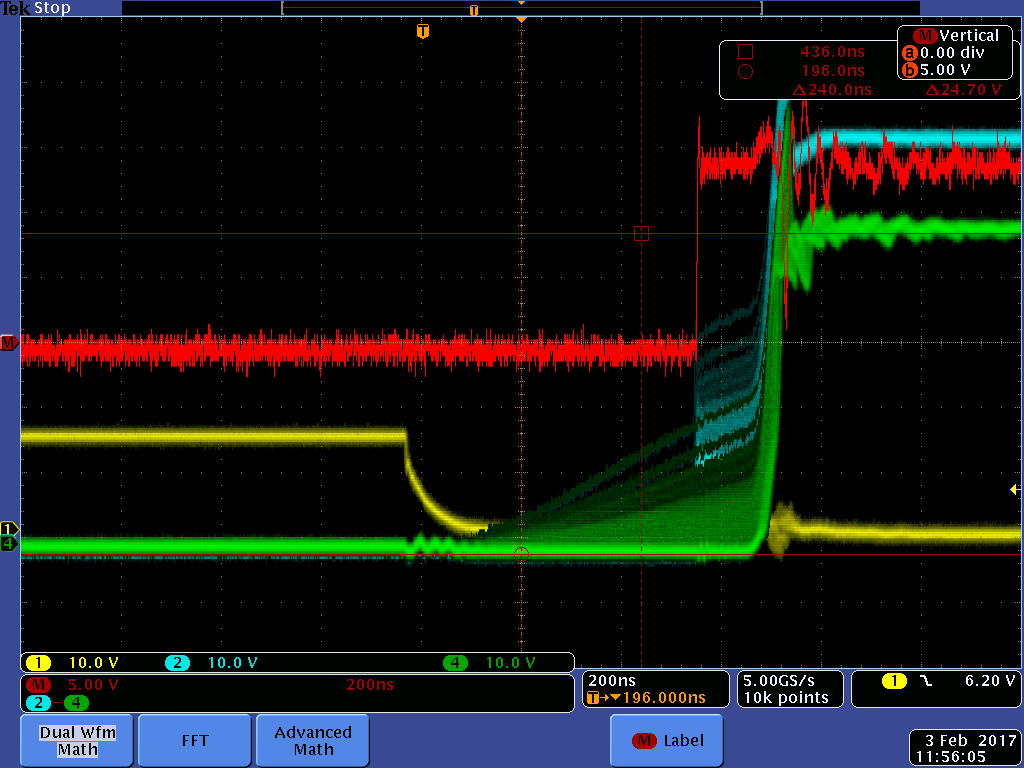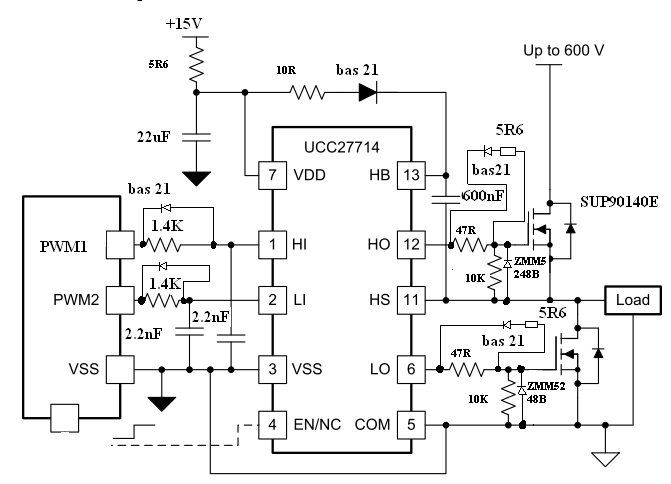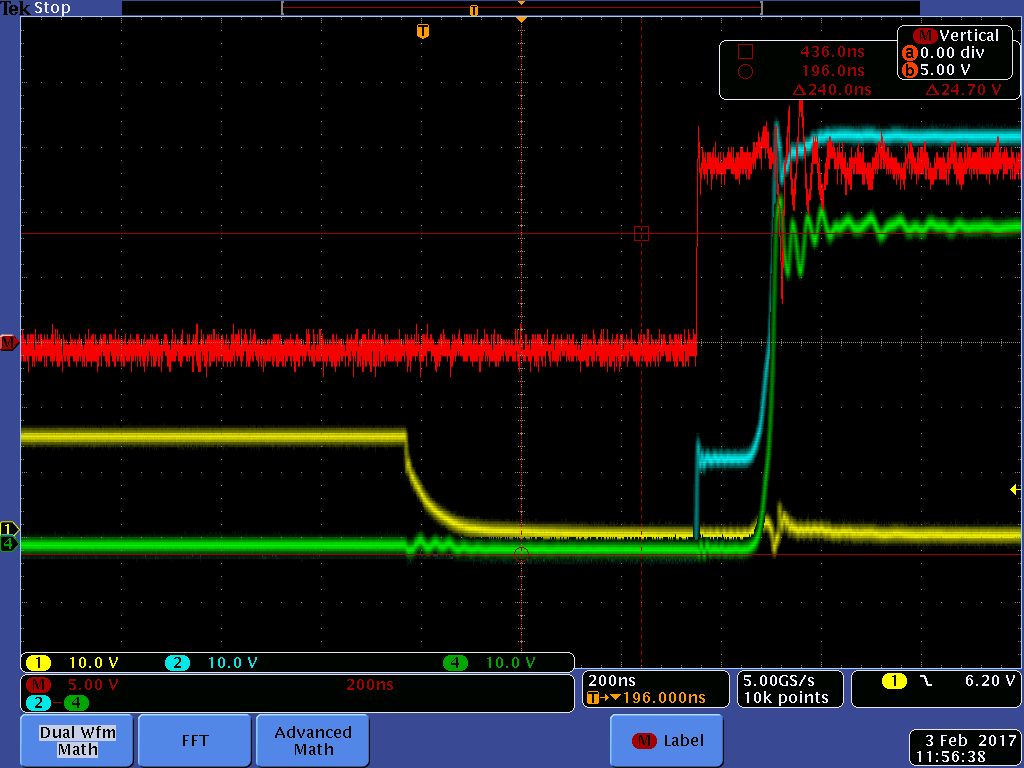Other Parts Discussed in Thread: UC2824,
I am using UC2824 to drive UCC27714 and then to N MOSFET SUP90140E. The waveform is taken on pins of UCC27714 with respect to pin 5. Channel 1 Pin 6 Channel 2 pin 12 channel 3 pin 2 and channel 4 pin 1 . My question I saw oscillation in rise time waveform of channel 2 which is the high side drive for the mosfet. Any idea how to troubleshoot? Is the oscillation cause by the DC TO DC Inductor ? My design is a buck converter with input at voltage of 45V and output suppose to be at 28V, I currently unable to raise the output voltage to 28V . There is a output load 4 ohm attach to the output capacitor . Thanks a millions.


